Understanding Guide to Waxing Methods: Hard Wax, Soft Wax, Spatula and Roll-On Explained
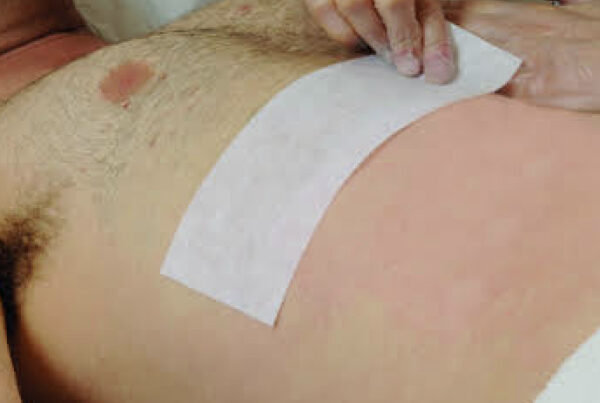
Choosing the right waxing method can make all the difference between a comfortable experience and a painful ordeal. Whether you’re a first-timer or a waxing veteran, understanding of different waxing techniques can help you achieve that silky-smooth skin you’ve always wanted. By the end of this article, you’ll be equipped with the knowledge to make an informed decision about which hair removal technique is best for you.
Understanding the Basics: What is Waxing?
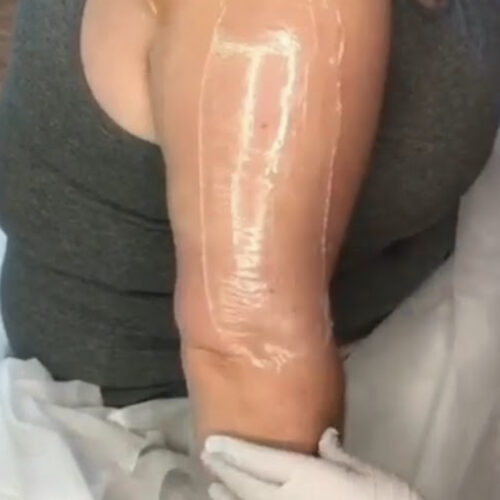
- Warming the wax to make it pliable
- Applying the wax in the direction of hair growth
- Removing hair from the root
- Providing smoother, longer-lasting results compared to shaving
- Soft Wax : Removes top layer of dead skin cells
- Hard Wax : Minimizes skin contact
- Roll-On Wax : Provides more controlled application
- Spatula Method : Offers precision in hair removal
Let’s explore each one in details to help you make the perfect choice for hair removal for your perfect look and appearance.
Why Understanding Wax Types Matters

- Protect your skin from unnecessary irritation
- Choose the right method for different body parts
- Reduce pain during hair removal
- Save money by avoiding ineffective treatments
- What works best for your skin
- How to minimize discomfort
- The most effective way to remove hair
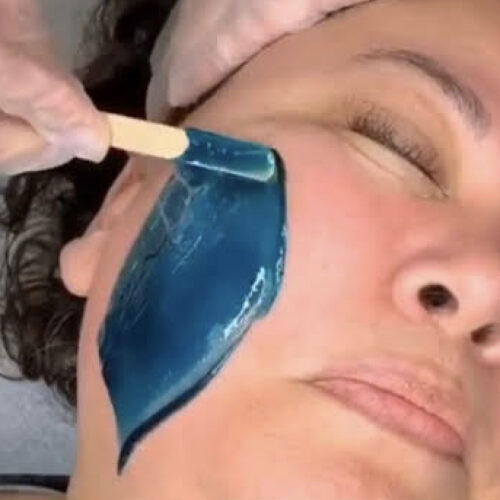
Soft Wax: The Classic Hair Removal Technique

- Full legs
- Arms
- Chest
- Back
- Large body surfaces with thicker hair
Soft Wax Formulation
- Thicker consistency
- More suitable for coarse hair
- Provides better grip on stubborn hair
- Ideal for body areas with dense hair growth
- Thinner, more fluid consistency
- Easier to spread
- Works exceptionally well on fine hair
- Provides more even coverage
- Less painful compared to creamy variants

- Quick application for large areas
- Cost-effective
- Works on various hair lengths
- Provides mild skin exfoliation
- More painful due to skin adhesion
- Can cause skin irritation
- Not recommended for sensitive skin
- Requires precise strip removal technique
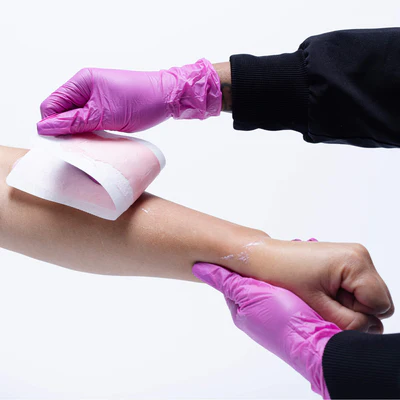
Application Techniques
Mastering Soft Wax Application
Step-by-Step Guide to Using Soft Wax
Start by ensuring your skin is clean, dry, and free of any oils, lotions, or moisture. This helps the wax grip the hair better. Ensure hair is correct length (1/4 to 1/2 inch).
Before applying the hot wax on your skin, test it on your wrist to ensure it’s a comfortable temperature that you can bear and safe for use.
Place a cloth or paper strip over the wax immediately, leaving an edge to hold onto. Press the strip firmly in the direction of hair growth to ensure it sticks to the wax and hair.
Versatile Uses of Soft Wax
- Dramatically reduces service time
- Minimizes cross-contamination risks
- Eliminates the need for multiple spatulas
- Allows quick coverage of extensive areas like a full back
- Slightly sensitive skin
- Normal to thick skin types
- Varied hair textures
Hard Wax: A Gentler Alternative
Hard wax represents a significant advancement in hair removal technology. Unlike soft wax, it creates a flexible film that adheres only to hair, minimizing skin irritation and providing a more comfortable experience.
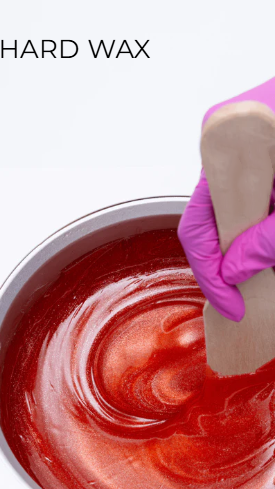
- Facial waxing
- Bikini area
- Brazilian waxing
- Underarms
- Sensitive skin regions
- Areas with fine or short hair

- Less painful than soft wax
- Doesn’t stick to skin
- Can be applied twice in the same area
- Ideal for sensitive skin
- Works well on shorter hair
- Challenging for larger areas
- Can break if applied too thinly
- Sensitive to temperature changes
- Requires practice to master
- Can be messier to work with
- Slower application process
When to Choose Hard Wax
- Facial waxing
- Bikini and intimate areas
- Underarms
- Regions with sensitive skin
- Areas with shorter or finer hair
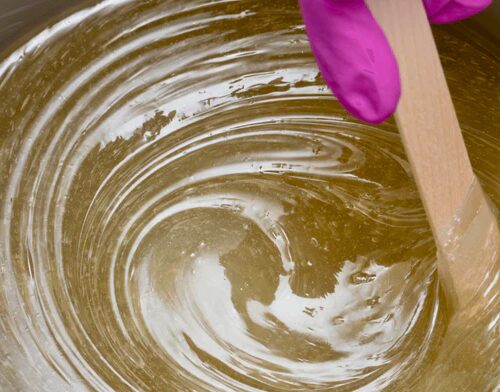
How to Wax with Hard Wax?
Step-by-Step Guide to Using Hard Wax
Allow the wax to set for a few seconds until it hardens but remains flexible. You can gently tap it to check if it’s ready.
Once firm, hold the thicker edge of the wax and quickly pull it off against the direction of hair growth. Use your finger and thumb or a spatula to lift or pinch the wax lip. Keep the skin tight with your free hand to reduce discomfort. Finish with post-wax care products suited to your client’s skin type for best results. Immediately press your hand on the waxed area to relieve any pain.

Who is the Ideal Client for Hard Wax?
- Coral Film Hard Wax
- Starsoft Film Hard Wax
- Pink Film Hard Wax
- Blue Film Hard Wax
- Black Film Hard Wax
The Science Behind Hair Removal: Understanding Your Body for Your Ideal Waxing Method
- Anagen (Growth) Phase : Active hair growth lasting 2-7 years
- Catagen (Transition) Phase : Short period where hair stops growing
- Telogen (Resting) Phase : Hair falls out, and the cycle restarts

Hair Removal Techniques: From Traditional Spatulas to Modern Roll-On Systems

Roll-On Wax: Modern Convenience Meets Hair Removal

- Single-use, contamination-free format
- Precise temperature control
- Easy application mechanisms
- Reduced mess and preparation time
- Pre-filled cartridge system
- Easy to apply
- Reduces mess and cross-contamination
- Available in soft and hard wax varieties
- Quick application
- Minimal preparation required
- Hygienic cartridge format
- Suitable for large areas
- Reduces service time
- Legs
- Arms
- Back
- Areas requiring fast hair removal
The Spatula Method: Precision and Tradition
- Precise control over wax application
- Suitable for various wax types
- Cost-effective for professionals
- Allows customization of wax thickness
- More time-consuming
- Potential for uneven application
- Requires more skill
- Can be messier
Choosing Your Ideal Waxing Method
- Skin sensitivity
- Hair type and thickness
- Body area
- Pain tolerance
- Budget
- Personal comfort
- Sensitive Skin : Hard wax or specialized formulas
- Normal Skin : Soft wax or roll-on options
- Coarse Hair : Soft wax or specific hard wax formulas
- Face : Hard wax or specialized soft wax
- Bikini Area : Hard wax
- Large Areas : Soft wax or roll-on
- Precision Areas : Hard wax or spatula method
- Soft Wax : Moderate to High Pain
- Hard Wax : Low to Moderate Pain
- Roll-On Wax : Varies based on formula
- Spatula Method : Dependent on technique
Hard Wax vs. Soft Wax for Services
The Ultimate Choice: Soft Wax or Hard Wax?
Expert Tips for Successful Waxing
- Ensure hair is the right length (1/4 to 1/2 inch)
- Exfoliate 24-48 hours before waxing
- Avoid moisturizing immediately before waxing
- Check skin for cuts or irritations
- Apply post-wax oil or lotion
- Avoid sun exposure
- Wear loose clothing
- Don’t exercise immediately after waxing
- Avoid hot showers for 24 hours
- Always perform patch tests
- Maintain proper skin preparation
- Use high-quality, professional-grade products
- Follow strict hygiene protocols
- Waxing too frequently
- Incorrect hair length
- Improper skin preparation
- Using expired or low-quality products
Are there any risks involved with waxing?
- Conditions to Avoid Waxing : Waxing, regardless of the type, comes with some risks. The U.S. Food and Drug Administration (FDA) advises against waxing if you have diabetes or circulatory issues.
- Areas to Avoid : It’s also important to avoid waxing over varicose veins, warts, moles, or any areas with sunburn or irritated skin. Waxing should never be done on sensitive spots like eyelashes, nipples, inside the nose, or ears.
- Precautions for Retinoid Users : The American Academy of Dermatology (AAD) recommends stopping retinoid creams at least 2 to 5 days before waxing to prevent skin irritation.
- When to Seek Medical Advice : If you notice prolonged redness, swelling lasting more than 2-3 days, or worsening irritation after waxing, it’s best to consult a healthcare provider.

